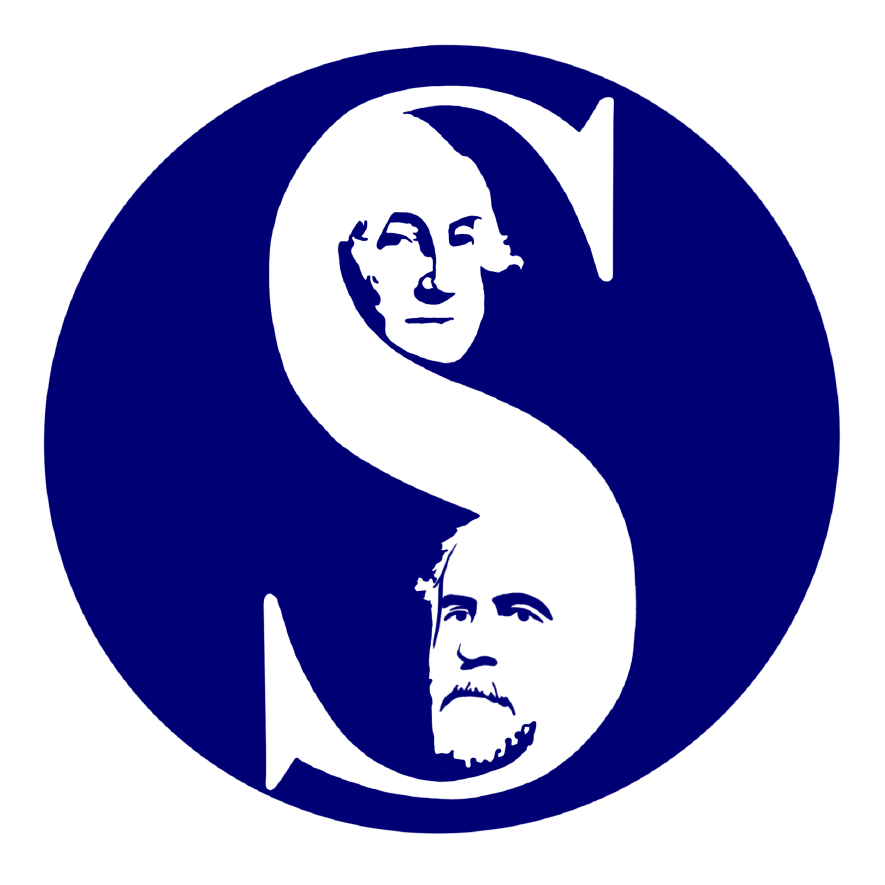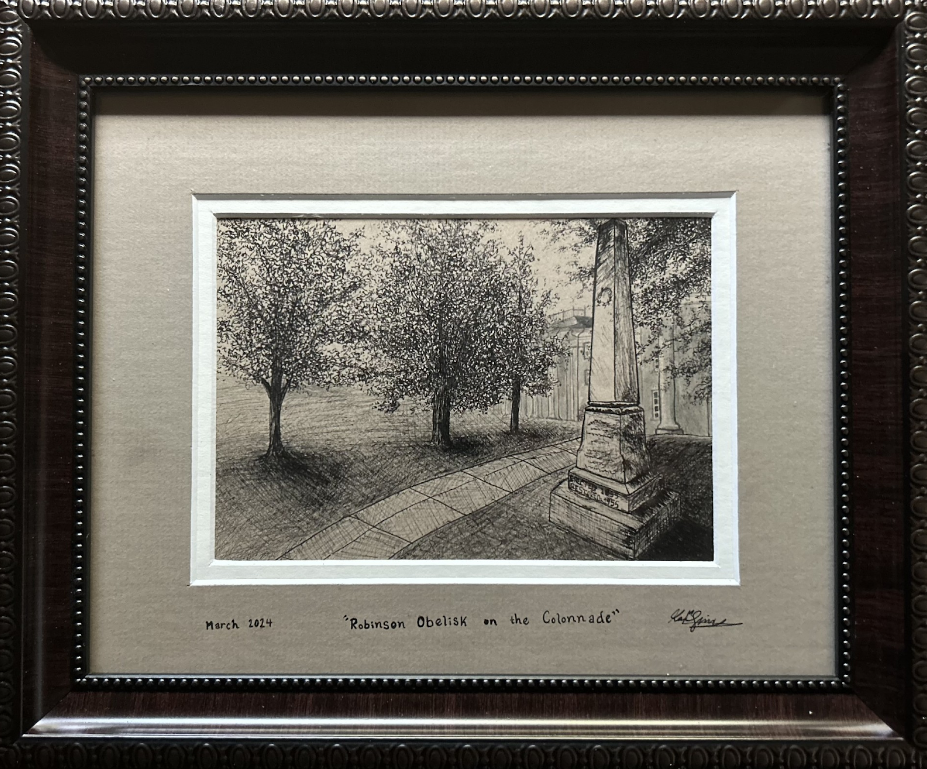Historical Highlight: John Robinson’s Exhumation
Historical Highlight: John Robinson’s Exhumation
An 1855 letter describes the time capsule buried under the Robinson obelisk
Sponsored by Students for Historical Preservation (SHP)
(Sketch of the John Robinson Obelisk. Source: Kamron Spivey)
[The following highlight features the two-page letter inserted in a glass bottle buried alongside “Jockey” John Robinson in 1855. Robinson was an early Washington College trustee and benefactor who was the primary donor for the construction of what became Washington Hall. He was an Irish immigrant, Revolutionary veteran, horse trader (or “jockey”), distiller, and plantation owner. He left his entire estate to Washington College when he died in 1826. This approximately $50,000 bequeathal included 76 enslaved people.
Robinson was initially buried elsewhere on campus, but in 1855 university officials exhumed him and placed him closer to the Colonnade. They erected the marble obelisk seen today and dedicated his memorial on July 4, 1855. The following letter, courtesy of W&L Special Collections and Archives, is an exact copy of the letter buried in the time capsule. Please contact SHP with any questions. The below Latin comes from Horace Odes I.4]
“Pallida mors aequo pulsat pede pauperum tabernas,
Regumque turres,” ______. Iam te permit mors.
This paper is placed in a glass bottle, hermetically sealed, on this 22nd day of June A.D. 1855, along with a triennial catalogue of this present year, a dime of 1853, a copy of the Laws of Washington College, a title page of the Holy Bible, one of “The Presbyterian”, one “Watchman & Observer”, ¼ of the “Lexington Gazette”, ¼ of the “Valley Star” newspapers, and an extract of John Robinson’s will.
The bottle will be placed in the small pine box, which contains all the relics of Mr. Robinson’s bones, which we could gather up – they had been buried 29 years – the skull is nearly entire – lower jaws, a few of the vertebrae – & of the short ribs – the innominate bones of the arms & legs, parts of the tarsal bones, one of the patellae, a portion of the more fibrous matter of the brain; this last was formed in the lower part of the skull, concave below & concave above & about three inches diameter!
The box &c. will be placed in the centre of the concrete mass of river pebble, & hydraulic lime, composing the basis of the Robinson monument to be erected on the 3rd of next July. The monument has been made of Italian marble by John Baird, Philadelphia, Penn.a – erected by Francis Jenks. It cost the College $500 in Philadelphia.
Reader! how great good has resulted to the world from Mr Robinson’s liberal benefactions! Where are we whilst thou readest? “Believe on the Lord Jesus Christ & thou shalt be saved.”
George Junkin
Pres. Wash. Col.
P.S. We could not hermetically seal the bottle, but put the articles in a strong bottle, with ground stoppers & sealed with gum shellac. An autograph of the present Faculty was also put in.
(Framed facsimile of the 1855 Robinson time capsule. Source: Kamron Spivey)



